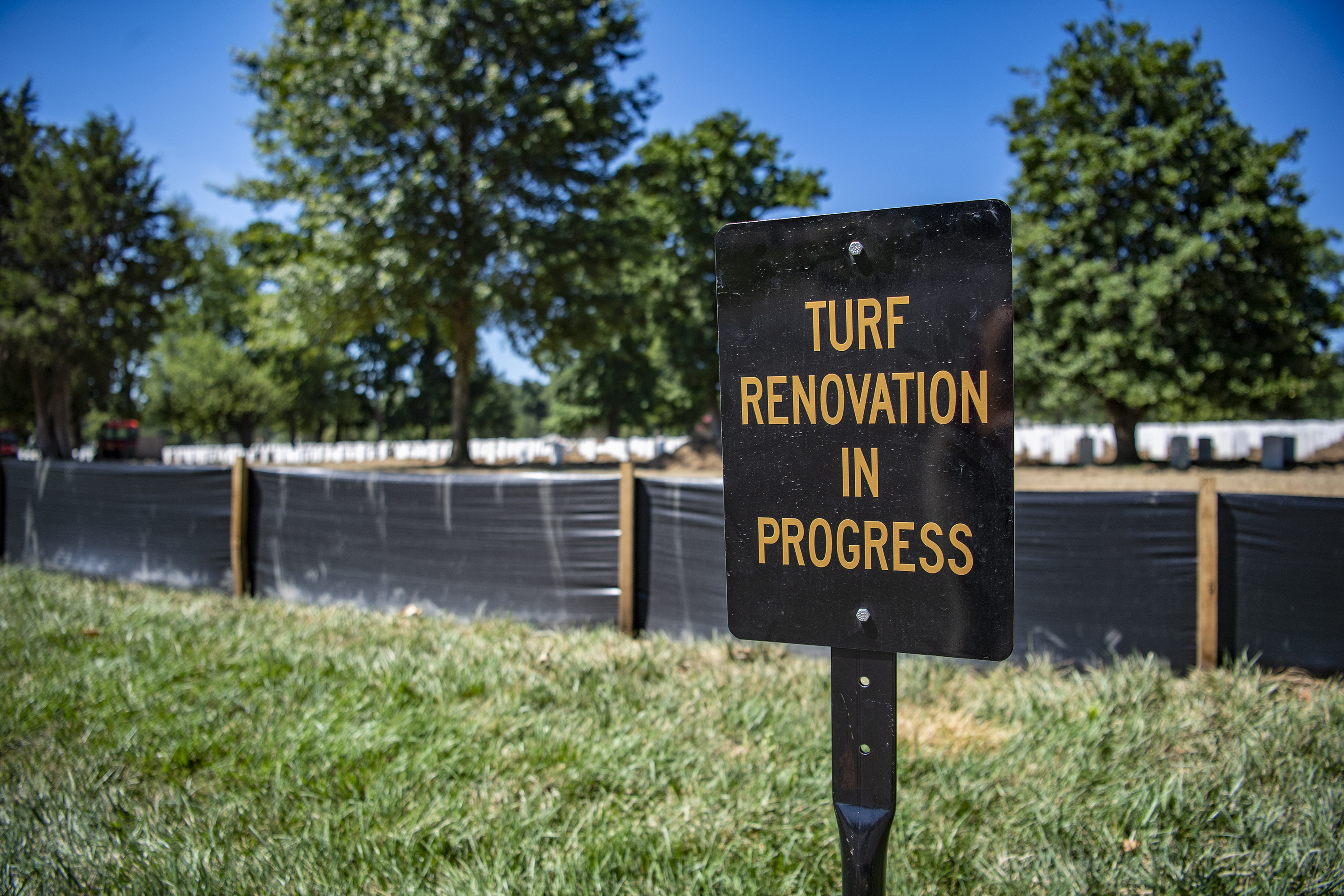By Kevin Hymel, Historian
If you ever notice sections of Arlington National Cemetery (ANC) stripped of their lush green grass, just know that they appear that way for an important reason. “It’s turf renovation,” explained Stephen Van Hoven, who has been ANC’s chief of horticulture for the last nine years. “We do about 30 acres every year.” As a national shrine, and a Level III Arboretum, ANC maintains its grounds to national shrine standard.

This year, Van Hoven and his team of contract landscapers have begun renovating Section 33 and part of Section 60. Cemetery leaders debated renovating Section 60, since it would impact one of the most visited areas in the cemetery. In discussions, Van Hoven made an important point: “Since everybody goes there and it’s such a highly visible area, let’s make it look as good as we can.”
Van Hoven and his team renovate turf yearly for different reasons. They target sections that are bare, dominated by weeds or covered in dead grass. Hot summers can kill the turf, he explained, “and it won’t come back even in the fall when it gets wet.” He also looks for burial sections that have become uneven from graves settling, water drainage issues or engineers driving heavy equipment over the area. Van Hoven keeps records on previously renovated sections, which help guide him on which sections to do next. He especially likes renovating adjoining sections. “It’s nice to have some continuation in certain areas every year.”
In Sections 33 and 60, signs will soon be posted to let visitors know what to expect for the next six to eight weeks. Van Hoven explained that people rarely complain about turf renovation, and are usually impressed that his team is working to make cemetery look better. “Even though it is disruptive, the end result is such a dramatic improvement,” he said.

The four-stage process starts at the end of every summer and lasts into the fall. The first stage involves killing off the existing turf, and any weeds, by spraying it with herbicide. The vegetation dies in about ten days, but the area usually requires a second application for missed spots. At the beginning of August, the team scrapes up the dead vegetation, fills in any areas and fixes any drainage issues. In stage three, team members plow the ground to a depth of about four to six inches and smooth everything out. “It’s a pretty dirty and dusty process,” said Van Hoven. Finally, they spread seed over the section and blanket it with CoverGrow—green, recycled wood and cellulose fibers, which hold the seeds in place.
The seed Van Hoven’s team uses is a cool season grass called Tall fescue, as distinct from warm season grasses like St. Augustine or Bermuda. “We consider the warm season grasses weeds,” he explained. “We put a lot of effort into getting rid of grass like Bermuda.”
Once the seeding is completed at the beginning of September, Van Hoven then waits for rain and cooler temperatures. “Seeding in the fall is the best,” he said. “Temperatures are going down, we’re getting more precipitation, and we have nice, cooler nights.” When everything goes well, the grass will have returned within four to six weeks. If the following weeks are dry, Van Hoven and his team will have to water the sections, which he prefers not to do. “You’re enabling the grass,” he explained. “If you start watering it and you get it to germinate, and it’s still hot out, it’s going to fry. It’s a delicate balance.”
Once that delicate balance is struck and a section of Arlington looks verdant again, the finished product fills Van Hoven with pride. “When everything comes together, and you end up getting a really great section of really great grass,” he concluded, “it’s very gratifying.” And that’s what he hopes for this year in Sections 33 and 60.
See also:
► Memorial Arboretum and Horticulture
► Sustainable Practices at ANC